"A Wrighteous Wretrospective" is an ongoing series where we look back at games from the past and analyze where they came from, how well they've held up since release, and what the future holds for the game and its ongoing legacy. Today, we'll be taking a look at...
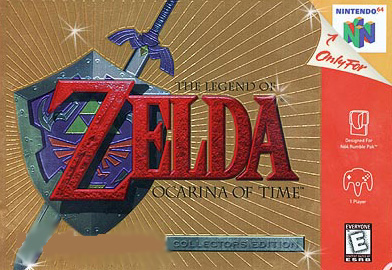
There are many stories, but only one Legend.
When the Nintendo 64 was first announced in 1994, Nintendo planned for Super Mario 64 to be the title that introduced gamers to the new platform--the idea being that the allure of a new 3D Mario game would bring in a larger audience at launch, like Super Mario World did for the Super Nintendo years earlier. Likewise, when they announced the Nintendo 64DD add-on for the N64, Nintendo stated that The Legend of Zelda: Ocarina of Time would be one of the premier titles for the accessory--a game of such scale that it would only be possible with the additional power provided by the disk drive.
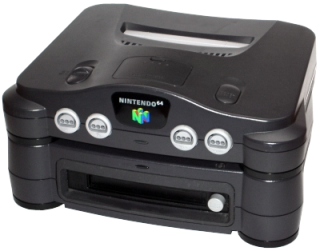
At the time, series creator Shigeru Miyamoto talked about his plans for a game with a truly persistent world--if players cut down a shrub or a tree in the game world it would be gone forever, and conversely players would be able to plant seeds that, over time, would grow into trees that the player could then climb to gain access to new areas. As the 64DD's release date kept getting pushed back, however, Nintendo's plans for the new Zelda changed. They scaled back on their concepts for the game and released Ocarina of Time as a cartridge release for their main console, planning to release a "remixed Second Quest" and a "campaign expansion" on the 64DD when the system was finally ready--these semi-sequels would eventually be revised and altered to become Ocarina of Time: Master Quest and The Legend of Zelda: Majora's Mask when the 64DD proved to be a commercial failure.
Despite the somewhat convoluted development, however, Ocarina of Time was finally released in the Fall of 1998 on a 32-megabyte cartridge--the largest Nintendo had available at that time. The game was released to rave reviews, many of which proclaimed the game to be "the greatest video game ever made". So far, that is a title that has managed to endure--over a decade later, Ocarina of Time is still the highest ranking game on the review aggregate websites GameRankings and Metacritic. The game was praised for successfully updating a classic 2D franchise in 3D--taking an entirely new approach that built upon the franchise's rich history and heading off in a new direction, much like Super Mario 64 did before it, shaping the way third-person games would be controlled to this day.
A thing that does not change with time is a memory of younger days...
As nearly any gamer now knows, The Legend of Zelda: Ocarina of Time is the beginning of the Zelda saga, portraying the first time that the destinies of Link, Zelda, and Ganon become intertwined with the fate of the ever-powerful Triforce. In order to prevent a dark future under the reign of an evil thief from occurring, Zelda and Link conspire as children to protect the Triforce at any cost on an adventure that has Link travelling through time from childhood to adulthood and back again, learning the creation myths of the world he lives in and interacting with its many inhabitants along the way. When Ocarina of Time was released, it was one of the first 3D console games to feel like a lived in fantasy world. Each section of Hyrule was separated by its own race of creatures who inhabited varied ecosystems that shaped their societies and cultures. Each town was filled with villagers going about their day--their actions changing whether they were encountered during the daytime or night. The fact that players revisit these areas and characters after a seven-year gap only strengthened this new approach to Hyrule, as Nintendo could show how Ganon's evil grip on the country has affected them and how they've responded to their hardships. Likewise, since the game took place in a concrete place in Hyrule's timeline when compared to other games in the series, Ocarina allowed Nintendo to really flesh out the backstory and history of Hyrule and its races.
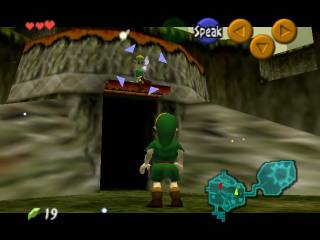
While Mario had introduced the concept of 3D-platforming and user-controlled cameras, Zelda's main contributions to 3D gaming came in the form of "Z-targeting" and context-sensitive controls. Z-targeting, named after the N64 controller's trigger button, was the first use of a lock-on targeting system in a third-person adventure game. With the press of a button, players could focus their attention on a single enemy or object, making interacting with their environment or staying focused during combat much more intuitive. Likewise, context-sensitive controls allowed players to do a variety of different actions with a limited number of button inputs, depending on the situation. Link could open a door or treasure chest, and push, pull, or climb a box using the same button prompt in different circumstances. Both of these advancements in 3D gaming allowed the pastime to become more complex without becoming more complicated. These gameplay breakthroughs, however, are not without issues of their own. In Ocarina of Time, Link would jump from platform to platform when players ran him towards the edge. There are some situations, however, where this would cause Link to jump to his death or into a trap unintentionally, when a player is just trying to cross a bridge or climb a ledge. This problem is exacerbated by the lack of any true camera control. Aside from lock-on targeting, the player is only able to center the camera directly behind Link, which makes examining his surroundings and moving on a narrow path needlessly painful.
A sense of a vast world waiting to be explored was a common facet of classic Zelda games, and the huge (for its time) overworld hub that was Hyrule Field provided a satisfying sense of wonder and scale for gamers in 1998. Throughout Hyrule, there were cracks that could be bombed, seeds that could be planted, and rocks that could be destroyed to provide access to secret areas, new items and abilities, and in some cases, even miniature dungeons. Players were significantly rewarded for exploring their environment and experimenting with the world around them. Ocarina also introduced the concept of non-essential side-quests to the series, where character interactions would often lead to a request that you fetch an item, complete a goal, or defeat an enemy for them in return for some sort of reward. Many times these rewards wound up being a piece of heart to extend the player's life meter, but some more involved quests rewarded Link with magical attacks, more bottles to hold potions and fairies with, and in one case, a more powerful sword. Alongside this sense of freedom, however, Ocarina introduced a more directed and controlled aspect to the franchise. While gamers were still able to tackle some dungeons out of order and explore certain areas earlier than the plot demanded, Ocarina is clearly the first game in the series to start restricting players in their actions, something that has become a major complaint for the series in the games since. The benefit of this is less frustration or confusion on where to go and what to do, but it takes away some of the reward gamers had for discovering and accomplishing things on their own. Ocarina tends to hold the player's hand a bit too much. Nowhere is this more evident than in the characters of Navi the fairy and Kaepora Gaebora the owl.
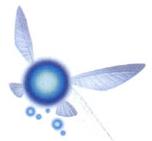
While progressing through the game, Navi was designed to be a guide to "navigate" players to their next destination. However, she would give this advice quickly and constantly with a shrill cry of, "Hey!" or, "Listen!" The game would repeat these voice clips fairly regularly if a player decided not to ask for her advice, and Navi would often offer her words of wisdom even if it was clear that you were heading to the correct area, or more egregiously, if you were in the actual location but hadn't yet activated the next plot point. Kaepora Gaebora was similarly irritating in that he would show up at specific points in the plot before giving a long-winded recap of what has previously occurred and explaining in precise detail a new gameplay mechanic that the game was about to introduce. While useful in its own right, these tutorials were long and tedious, and only served to irritate players who had already played through the game or were aware of its basic concepts. He would follow up every tutorial asking if the player would like him to repeat his diatribe, and the cursor was almost always set to "Yes" by default, causing many an impatient gamer to sit through his monologue yet again.
The Zelda series has always been known for its emphasis on collecting and utilizing items, and Ocarina is no different. While series mainstays like the bombs and boomerang returned, Ocarina of Time was also the first game to feature the Iron Boots and a quicker mode of transportation--in this case, Link's horse, Epona. Many of these items are useful in a large number of situations and provide Link with multiple ways of taking down enemies or navigating the large environments and complex dungeons. The items are usually fairly deep in their own right. The ocarina is essential to playing magical songs, but players are also able to extraneously affect the pitch and vibrato of the ocarina's notes by tilting the control stick in any direction. This small detail is completely unnecessary in the course of the game, but such loving attention to detail has always been a Nintendo hallmark. This is further shown when controlling Epona, who feels much different from controlling Link and provides a satisfying sense of speed in addition to being a necessity during some side-quests. Epona suffers from some of the same finicky controls as Link, though, due to her context-sensitive nature. When you lead Epona to a body of water or a set of stairs, she'll stop on a dime and rear up on her hind legs, backing up for a few feet before returning control to the player. Likewise, certain fences are trouble spots to hop over, and if Epona isn't angled just right, she'll refuse to hurdle them. There are so many items and abilities, however, that many seem simply extraneous. Magic is useless in most cases, and only slightly more convenient in others. The Scarecrow Song goes unnoticed by many players and is only useful in a handful of situations when searching for hidden Skulltula collectibles or for a quick shortcut, as are the magic beans that can be planted as young Link and used to access hidden areas as an adult.
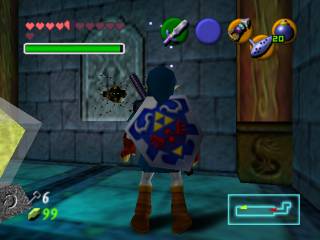
In recent years, Zelda has been accused of being formulaic, in the sense that Link often finds an object in a dungeon that he uses mainly for that level's puzzles and boss. While this conceit has some roots in Ocarina of Time, it also benefits the dungeons in the game, in that each level feels completely different from the one before it. The tone, the style, and the types of puzzles encountered differ greatly from dungeon to dungeon in part because they revolve around newly introduced mechanics each time. This was also a bit of an irritant in Ocarina, however, as certain dungeons emphasized the somewhat clunky inventory system, particularly the Shadow Temple and most famously, the dreaded Water Temple, which required players to constantly pause, navigate to the equipment menu, and switch out which boots they were wearing multiple times before the dungeon was complete.
One of the most surprising things about going back to play Ocarina of Time over ten years later is how cinematic the game is. For the most part, Nintendo seems intent on having story and cutscenes take a backseat to gameplay, but this game is full of memorable real-time cutscenes that move the story forward and give depth to the characters. A major highlight takes place in the final dungeon of the game. Link starts at the bottom of a tower hearing a muted organ playing in the distance, and as he climbs the tower the organ gets louder and more dramatic until finally, upon reaching the top floor, it's revealed that Gannondorf has been playing the music that has lead Link to him before he turns around and gives the hero his evil monologue.
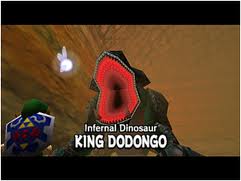
Other scenes manage to inject Link with more character than we've seen before or since--Miyamoto often talks about how Link was named such because he was meant to be an avatar for the player: a "link" to the game world that players could project themselves onto. However, in Ocarina we see hesitation and sense the awkwardness of the situation when Link says goodbye to his best friend Saria and leaves his forest village for the first time, showcasing his youthful inability to deal with an emotional moment. Likewise, when young Link confronts King Dodongo at the base of Death Mountain, we see the child from the dodongo's eyes, emphasizing how small he really is compared to his enemies. Even the way young Link scrambles up a chest-high barrier has more personality to it than the protagonist has had in entire games in the Zelda series. The game has a decent amount of family-friendly humor in it too, like when the Gorons try to hug Link for saving their food source and he runs off screaming in fear. Ocarina goes to show that it is possible to have a defined and likable personality in a silent protagonist and that an emphasis on gameplay over plot doesn't need to come at the detriment of story and character. Ocarina was one of the first games to emphasize showing the story over telling it, alongside the original Half-Life which coincidentally released in the same month as Ocarina of Time.
This presentation has begun to show its age, however, as a decade of advancements have made Ocarina of Time seem a bit basic. For one, like most games from the first generation of 3D consoles, the graphics don't hold up well at all. At the time, Ocarina was considered one of the more visually appealing games on the N64, but time has not been kind to the game, with blocky polygons, muddy textures, and barren landscapes giving the game a very primitive feeling. The MIDI music also serves to date the game. Nintendo has long preferred MIDI music since it allows the music to change and adapt based on the actions of the player, giving the audio a sense of fluidity, however the quality of the music doesn't match that of an orchestral soundtrack, which would particularly benefit the Zelda series and its sweeping scores and epic encounters. The dialog also becomes an issue, since it can't be sped up or skipped which ruins the pacing of some of the games key scenes. Ocarina also falls into the conceit of many JRPGs of the era in that characters will often ask "yes-or-no" questions, and the game will not continue unless given the "right" answer as dictated by the plot, shattering any illusion of choice and making the option completely superfluous.
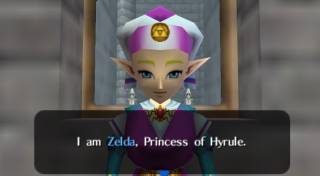
In the end, Ocarina is still an amazing game. There's a reason why it's widely considering the greatest game ever made and that it continues to influence game design to this day. Ocarina of Time hit such a perfect pitch of old-school game design with new-age sensibilities that the series has struggled to hit that balance ever since. While some aspects of the gameplay are dated and the graphics and audio quality can hamper the experience somewhat, the epic tone and scale of the adventure, the sense of wonder and excitement, and the quality of the dungeons and puzzles ensure that Ocarina of Time is still the best that gaming has to offer.
Have Ye What it Takes?
The Legend of Zelda: Ocarina of Time has turned out to be one of the most influential games in the relatively short history of the industry. In addition to being consistently praised as a source of inspiration for game designers, it has become the lynch pin that every game in the Zelda series since has somehow revolved around. It is the high-point in the franchise that every subsequent game has strove to emulate, for better or for worse, and with varying results. Ocarina of Time was so popular near the end of the 20th century, that actual ocarina sales went up noticeably following its release.
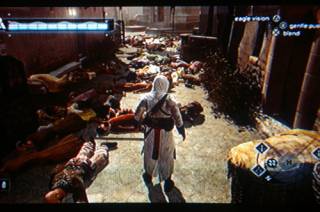
The game has gone on to influence many games since 1998. Context-sensitive controls are found in every game genre on every platform; Gears of War utilizes this feature for it's "Roadie Run" and navigating in and around the environment's pieces of cover while Assassin's Creed has utilized it (along with the auto-jump feature) to allow its protagonists to scale and traverse tall buildings with relative ease. Likewise, lock-on targeting is all but mandatory in third-person games today, and can be found in open-world franchises like Red Dead Redemption and Grand Theft Auto to action franchises like Devil May Cry and Tomb Raider. These concepts have allowed games to expand the abilities that developers provide to their players and come up with more meaningful and elaborate ways to interact with a game's environments. After Ocarina of Time was released, 3D gaming was irrevocably changed for the better.
We are on the verge of the release of a remake to Ocarina on the Nintendo 3DS, utilizing that system's power to deliver updated graphics and a 3D presentation to the classic game. While the game has been ported to a number of consoles and download services before, this will be the first time the game will be updated in any sense of the word (ignoring the Nintendo Gamecube release that bundled Master Quest along with the main game) and the changes should only make the game better. The remake seems to be focusing on fixing up the aspects of the original game that time has not been kind to, both in presentation and control. One particular change that series director Eiji Aonuma emphasized when the remake was first announced was in regards to the Water Temple, often cited as the worst portion of the game. Aunoma stated,
"I've lived with that for the last ten odd years. But with the 3DS we have a touch screen. You had to take off and on the boots constantly, right? So I'd like to lay the evil shame to rest, and add a feature to make the iron boots' control much easier."
Swapping inventory items in and out seems to be a lot easier, the graphics and sound quality have been brought more to modern standards, and the game will be implementing optional motion controls for projectile-aiming and a new interface for ocarina-playing. The only noticeable omission seems to be voiced dialog which would greatly improve the game's production values and speed up its pace. Overall, it has the potential to be a nearly perfect update to a nearly perfect game.
In the end, while time and game design have marched forward, Ocarina of Time still remains relevant. Despite the fact that the game isn't as pretty or as "epic" as it once seemed, good game design is eternal. As the years go on and Ocarina's legacy continues in all of the games that have learned from it, it will always be fun to go back and see where it all started. It may not be the perfect game anymore, but Ocarina of Time is still the best.
That's all for today. I hope you enjoyed this Wretrospective, and maybe learned a little something in the process. Feel free to post comments, opinions, and memories of this game below. Thanks for reading!
For more Wretrospectives, follow the links below:
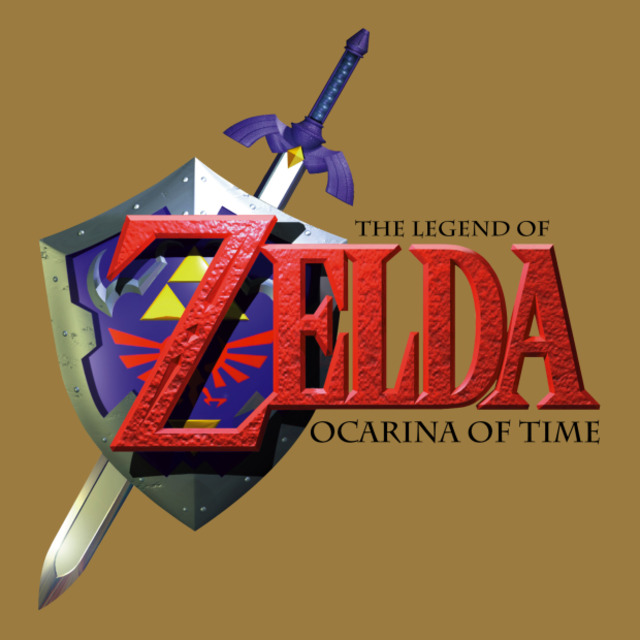
Log in to comment